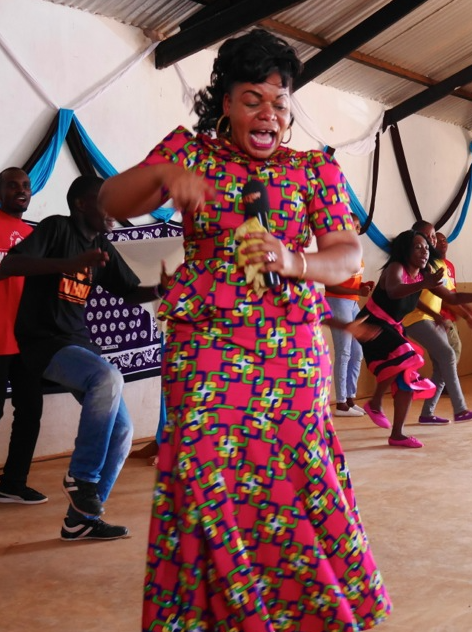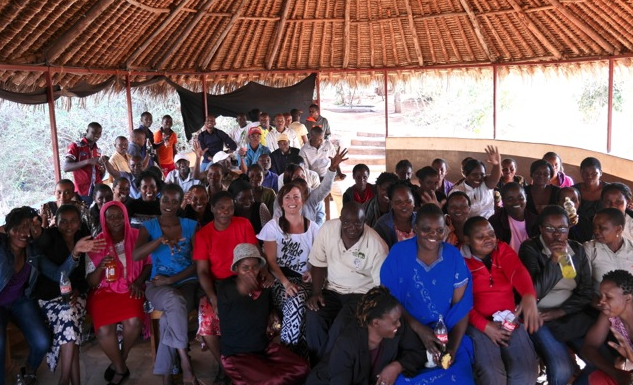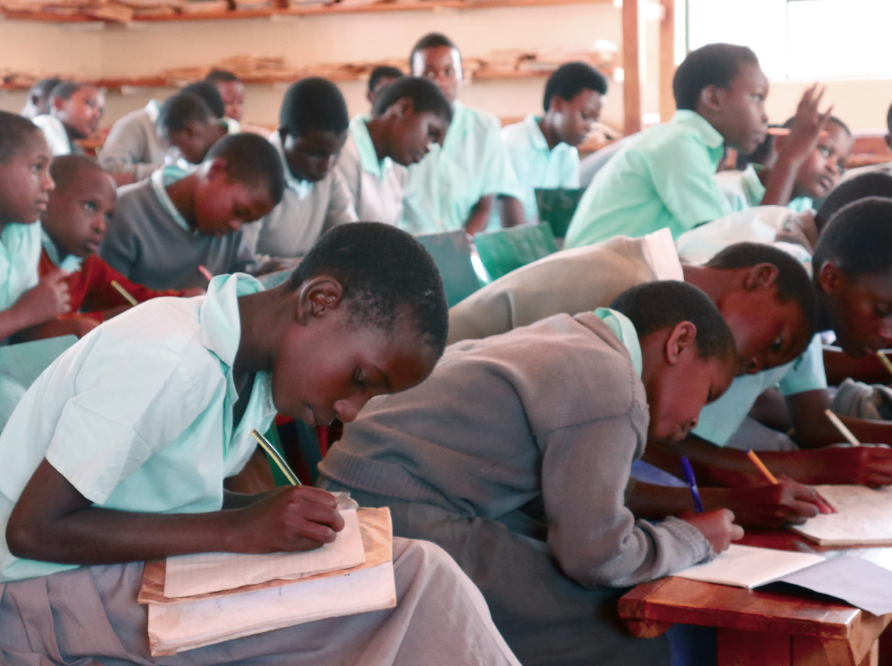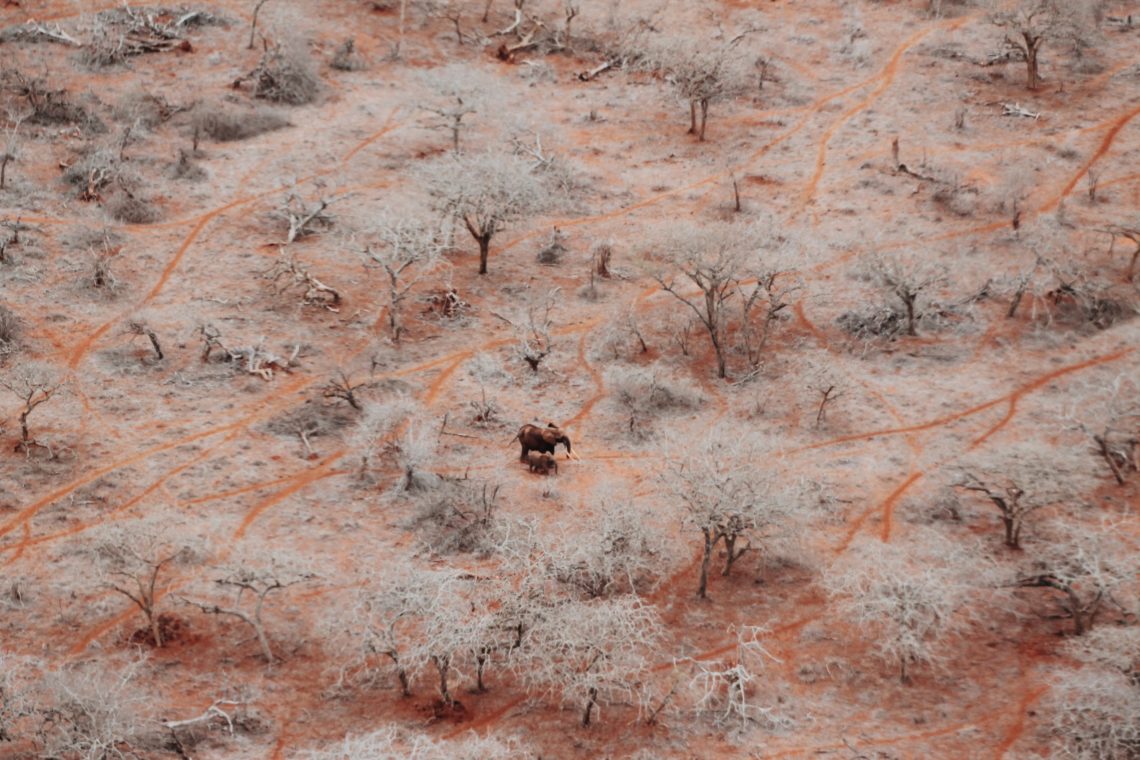
Three Elephant Rescues in One Day: the Product of Intensifying Tensions During a Period of Severe Drought
The reality of human-wildlife conflict is hitting home during the severe drought that most of Kenya is currently experiencing. The afternoon of 31st August 2022 was an intense day in the Kasigau Corridor REDD+ project. While on their daily patrol, a team of rangers spotted RF1, one of the oldest and most distinctive female elephants within the project area. RF1 was spotted grazing with her 4 year-old calf with a large arrow stuck in her trunk, digging so deep that the arrow had split in half. The rangers immediately informed the Wildlife Works Head of Security, who alerted the aerial surveillance team, the Sheldrick Wildlife Trust and Kenya Wildlife Service. When the teams arrived at the scene, they assessed the condition of the elephant, then separated mother and calf in order to dart RF1 from the ground. At the same time, the aerial team was closely monitoring the calf, and after RF1’s successful treatment by the vet, mother and calf were reunited.
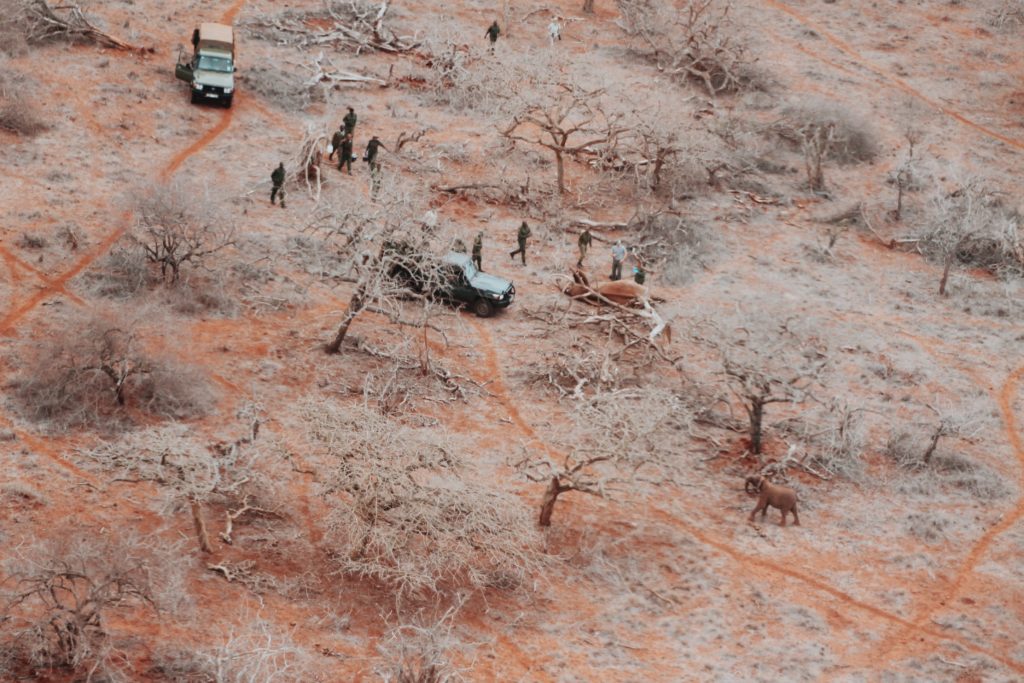
Meanwhile at another part of the project area, a ranger team spotted a herd of at least 20 elephants grazing and upon careful examination, they noticed a young calf with a wire snare around its neck. While wire snares are mostly used by bushmeat poachers trying to catch smaller antelopes, elephants can inadvertently become victims. In addition, the rangers noticed that an adult elephant in the herd had an arrow wound on its side that was oozing pus. Our aerial surveillance team, Sheldrick Wildlife Trust and Kenya Wildlife Service quickly responded. As is standard procedure, the vet and security teams assessed the elephants and carefully led the rest of the herd away before the vet proceeded to dart both elephants from the air. After successfully treating the baby and the adult elephant, they were reunited with the herd and they are expected to make a full recovery.
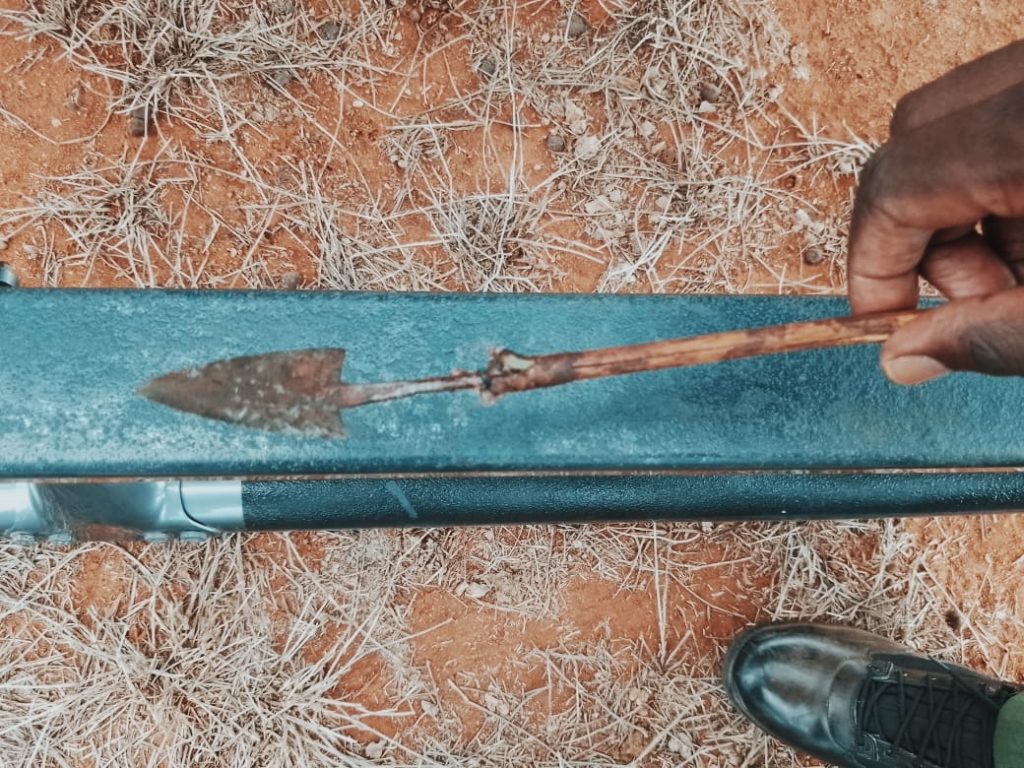
Arrows are commonly used by farmers who are trying to protect their crops from raiding elephants.
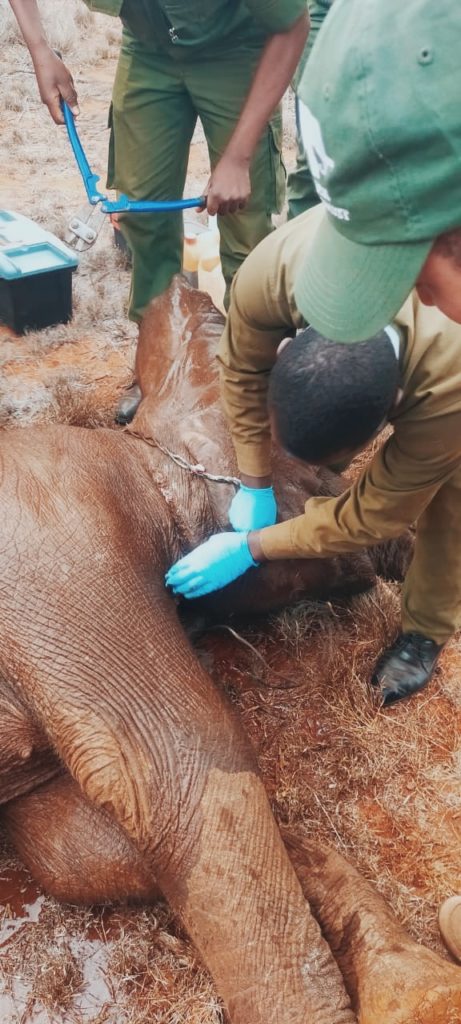
Snares are oftentimes used by bushmeat poachers to catch smaller antelopes, but elephants can also become victims.
Rescuing 3 elephants from snares and arrow wounds in one afternoon is a painful reminder of the reality of human-wildlife conflict and the pressures of bushmeat poaching. Aerial teams and rangers have been working hard to move herds away from community areas in the project, but as the competition for scarce resources between humans and wildlife intensifies , the situation is becoming increasingly difficult. We are continuing to engage with communities to encourage the protection of wildlife and their habitat, as well as reduce these incidents. We would like to thank our team, Sheldrick Wildlife Trust and Kenya Wildlife Service for their swift reaction to these rescue operations!

